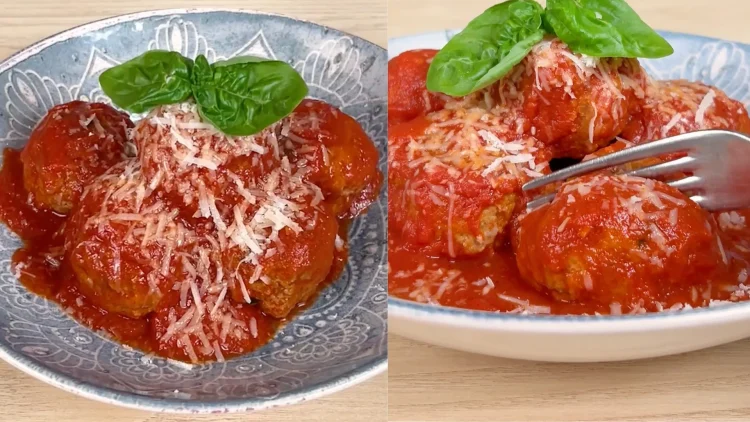There’s a universal truth we can all agree on, nothing beats the comfort of a juicy, tender meatball. Just the thought of sinking your teeth into a soft, flavorful bite, drenched in rich tomato sauce, and topped with a sprinkle of Parmesan makes your tastebuds dance right?
Whether you’re hosting a dinner party, enjoying a cozy family meal, or in need of a quick weeknight dinner, these meatballs are your new best friend. Tender, and packed with flavor, these little guys are a guaranteed crowd-pleaser. So, ready to get your hands a little messy and create a delicious dish?
The Story Behind the Meatball
While each country has its own version, the core idea is simple, ground meat shaped into a ball and cooked to perfection. In Italy, meatballs often represent family gatherings, Sunday dinners, and comfort food at its finest.
These meatballs, though humble in their beginnings, have become a symbol of love and tradition in kitchens around the world. In some parts of Italy, meatballs are served as a standalone dish, while in others, they’re paired with pasta, often on top of a big pile of spaghetti.
Pro Tips for The Best Meatballs
Soak your bread. This step makes the meatballs tender and prevents them from being too dry.
Don’t be shy with the salt and pepper. The right seasoning can elevate the entire dish.
Be gentle with the mixture. When mixing your ingredients, be sure not to overwork the meat. You want the mixture to be just combined, not packed tight.
Rolling the meatballs is less messy when you rub your hands with olive oil first. Plus, it adds a little extra richness.
Don’t rush the cooking process. Let the meatballs simmer gently in the sauce for at least 30 minutes for optimal flavor absorption.
Italian Vs. Regular Meatballs
Italian meatballs are typically made with a blend of ground beef, pork, and veal, mixed with breadcrumbs, Parmesan cheese, garlic, herbs (like parsley), and eggs for binding. They are often larger and served with tomato sauce, commonly paired with pasta.
Regular meatballs, on the other hand, can vary widely depending on the region. For example, Swedish meatballs are smaller, spiced with nutmeg and allspice, and served with gravy, while American meatballs are often beef-based and served with spaghetti. The key differences lie in ingredients, seasoning, and serving styles.
Can I Freeze Meatballs?
Yes! Once the meatballs are cooked and cooled, you can freeze them for up to 3 months. Just pop them in an airtight container and store them in your freezer. To reheat, gently simmer them in sauce or bake them in the oven.
Can I Use Chicken or Turkey Instead of Beef and Pork?
You sure can! For a lighter option, swap the beef and pork for ground chicken or turkey. Keep in mind that the texture might be a little different, but they’ll still be delicious.
How Do I Know When the Meatballs Are Fully Cooked?
The best way to check is to cut one open. If it’s no longer pink inside and the juices run clear, they’re ready.
Can I Make the Sauce Ahead of Time?
Yes! You can prepare the sauce up to 2 days in advance and store it in the fridge. Just heat it up when you’re ready to cook the meatballs.
Can I Add Vegetables to the Meatball Mixture?
Sure! Finely grated zucchini, carrot, or even spinach can be added to the mixture for extra flavor and nutrition.
Can I Grill the Meatballs Instead of Frying Them?
Yes, grilling can give them a delicious smoky flavor. Just make sure to form them tightly so they don’t fall apart on the grill.
Can I Make These Meatballs Without Parmesan?
Yes, but the Parmesan adds a lot of depth to the flavor. If you don’t have it or prefer not to use it, you can replace it with another cheese like Pecorino.
How Do I Keep The Meatballs Tender?
Avoid overmixing the meat mixture, as this can lead to dense meatballs. For cooking, either briefly pan-fry or simmer the meatballs directly in the sauce, as prolonged high heat can dry them out.
How to Store Italian Meatballs
To store meatballs, let them cool completely before transferring them to an airtight container. They can be refrigerated for up to 4 days.
Ingredients
see continuation on next page
